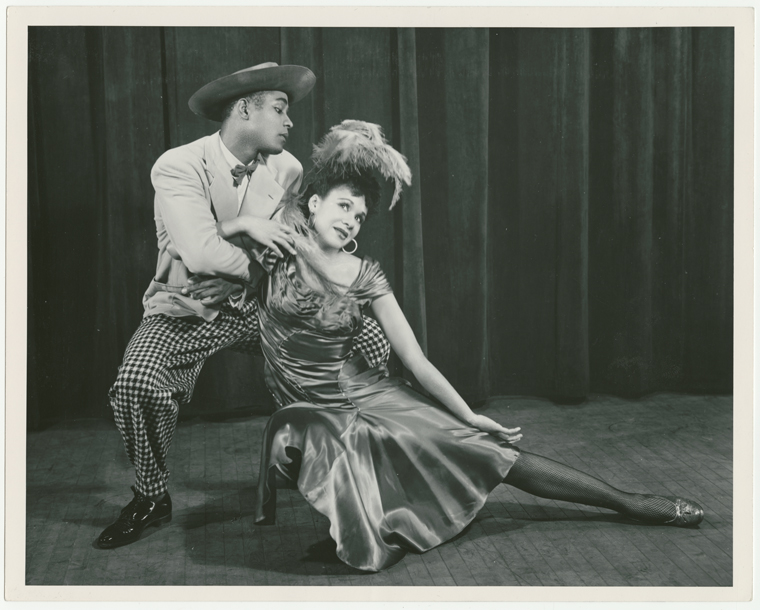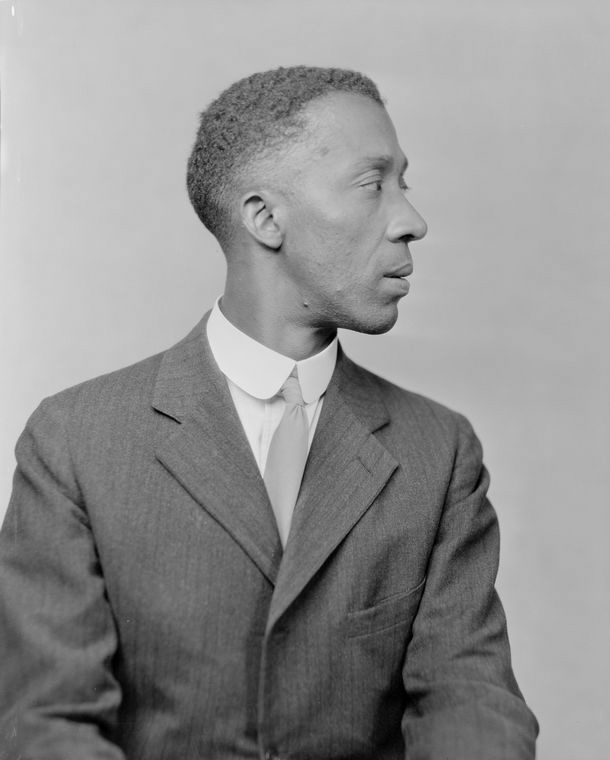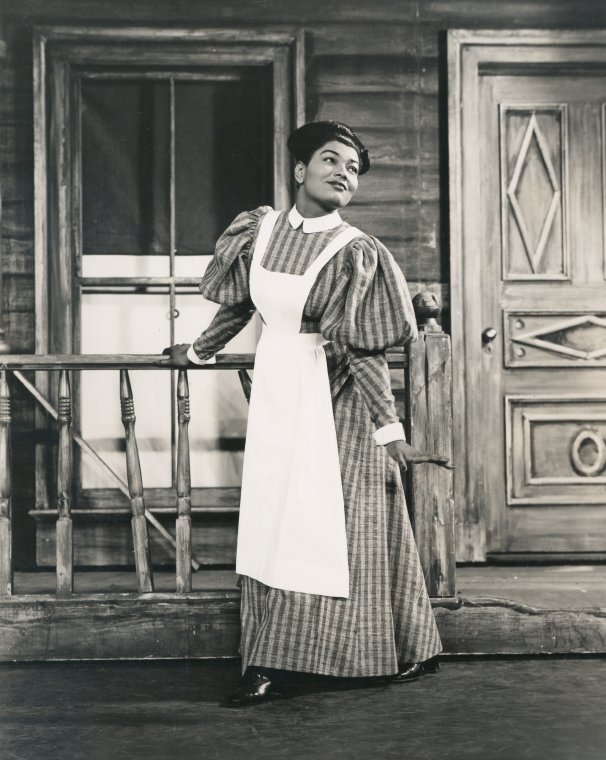African Americans on Broadway Then and Now
The 2015-2016 Broadway theater season is being hailed as one of the most diverse on record. The productions honor the triumphant spirit and resiliency of ethnic groups and adversity that immigrants and individuals have faced both globally and in the United States: Lin-Manuel Miranda’s groundbreaking Hamilton, new works (Allegiance, and the Gloria Estefan inspired musical On Your Feet), and revivals (Spring Awakening which was performed by deaf artists, and Fiddler on the Roof). This season is also notable for the numerous shows starring people of African descent including those who were traditionally and non-traditionally cast in The Gin Game, Hughie, The Color Purple, Shuffle Along or The Making of the Musical Sensation of 1921 and All That Followed, and Eclipsed. Is this slate of shows featuring African Americans on Broadway unprecedented? Let’s look take a look back into American theater history to approximately 70 years ago.
In a July 1947, issue of The NAACP’s publication The Crisis, John Lovell, Jr. wrote an article titled "Roundup: The Negro in the American Theatre (1940-1947)," which examines "the theatrical doings of Broadway and its environs" in regards to African American actors. In the article—which was published in a post-World War II, pre-Civil Rights Movement era U.S.—Lovell Jr. writes, "Of marked interest is the fact that this integration into the American theatre is making superlative demands. It requires that the Negro’s talents be twice as good as would be the case if he were already accepted."
During his roundup, Lovell Jr. discovered, "In the less than seven years since America went, psychologically, to war, the central American theatre has employed Negro performers in 110 plays which ran an aggregate of 13,373 performances." The number of shows with Black performers steadily increased from three in 1940 to 28 in 1946. These productions starred Canada Lee, Katherine Dunham, Pearl Bailey, Josephine Premice, Pearl Primus, Avon Long, Maurice Ellis, Melvin Howard, Frank Miller, Juanita Hall, Frederick O’Neal and other luminaries. (Some these artists were members of the American Negro Theatre, and an exhibit commemorating the 75th anniversary of this company's founding is on display at the Schomburg Center.)
As is the case this season, the shows that African Americans performed in on Broadway during the 1940s were a mixture of plays and musicals such as Cabin in the Sky, Big White Fog, Porgy and Bess, Native Son, Othello, South Pacific, Carmen Jones, Anna Lucasta, Show Boat, Juno and the Paycock, Lysistrata, Bal Negre, Striver’s Row, Run Little Children, You Can’t Take it With You, Finian’s Rainbow and St. Louis Woman. Lovell Jr. pointed out that with the exception for Theodore Ward’s The Big White Fog, and Our Lan, and Street Scene for which Langston Hughes penned lyrics, that were no "full-fledged Negro writers" whose work was being produced on The Great White Way. Ironically, even Native Son, which received two productions in 1941 and 1942, was adapted by Orson Welles and Paul Green from Richard Wright’s novel of the same name. However, numbers improved slightly only when taking Black musicians represented on Broadway into account: Thomas "Fats" Waller, Duke Ellington, Hall Johnson and Noble Sissle.
Lovell Jr. highlights a few reasons that factor into the quantity of shows with African American performers: timing, reviews, and what he calls both skittish managers and backers who "believe there are some things Negroes can do, and some things they can’t—at least for them." The most important factor, Lovell argues, is the number of available theaters at any given time. He also makes the case for shows with integrated casts: "integration is obviously not only good business but smart business."
A trend that Lovell Jr. foresaw that has come to fruition is what he calls Black actors being trained to act in "‘white’ plays as if they were colorless." Are the racially integrated, predominantly or all Black revivals of the classic plays A Cat on a Hot Tin Roof (2008), A Streetcar Named Desire (2012), A Trip to Bountiful (2013), 2013’s Romeo and Juliet (featuring Condola Rashad and Orlando Bloom), The Gin Game (2015), Hughie (2016), and the upcoming The Crucible with Tony-Award winner Sophie Okonedo as Elizabeth Proctor examples?
Lovell Jr. concludes with a declaration that is still relevant to the performing arts industry at large, especially in light of the controversy surrounding the 2016 Oscars which has caused an uproar regarding the hashtag #Oscarssowhite: "There are still severe limitations on the Negro artist, limitations that the theater in a democracy ought to be ashamed of… but there are no limitations on the determination of the Negro performers." He also imagines a future for Broadway that is more "rainbowlike, more wonderful than any drama that has yet seen the boards."

Will Broadway continue to be as inclusive and diverse as it is during the 2015-2016 season? The same factors that Lovell Jr. mentioned regarding which projects get produced with an African American or integrated casts continue to shape and influence what makes it to Broadway stages. In commercial theater, if the bottom line is box office sales and shows such as Hamilton, the 2004 and 2014 revivals of A Raisin in the Sun, and On Your Feet have demonstrated audiences want to see works that are reflective of the world they live in, what can audiences and artists do to challenge producing entities to ensure that there is parity on stage and behind the scenes in the upcoming seasons?
Read E-Books with SimplyE
 With your library card, it's easier than ever to choose from more than 300,000 e-books on SimplyE, The New York Public Library's free e-reader app. Gain access to digital resources for all ages, including e-books, audiobooks, databases, and more.
With your library card, it's easier than ever to choose from more than 300,000 e-books on SimplyE, The New York Public Library's free e-reader app. Gain access to digital resources for all ages, including e-books, audiobooks, databases, and more.
If you don’t have an NYPL library card, New York State residents can apply for a digital card online or through SimplyE (available on the App Store or Google Play).
Need more help? Read our guide to using SimplyE.



Comments
PA WILLIAMS GAL
Submitted by JAMES E FRAZIER (not verified) on March 1, 2016 - 8:08pm
Hi James, Please contact me
Submitted by A.J. Muhammad (not verified) on March 22, 2016 - 11:02am
Mother was a stage performer during the Renaissance era.
Submitted by James Fraz (not verified) on October 26, 2016 - 7:06pm
"Parity"
Submitted by Kate (not verified) on July 7, 2019 - 11:41am